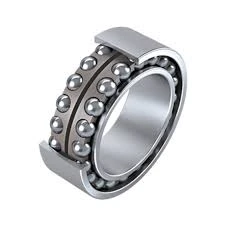
Oct . 03, 2024 08:05 Back to list
How Ball Bearings Minimize Friction and Enhance Efficiency in Mechanical Systems
How Do Ball Bearings Reduce Friction in Machinery?
In the vast world of mechanical engineering, the necessity for efficiency, precision, and power management plays a pivotal role in machinery design and operation. One of the crucial components that contribute to these factors is the ball bearing. Understanding how ball bearings reduce friction in machinery reveals the underlying principles of their design and functionality, shedding light on their significance in various industrial applications.
The Basics of Friction
Friction is the resistance that one surface or object encounters when moving over another. In machinery, friction occurs between moving parts, and while some friction is necessary for function—such as grip and control—excessive friction can lead to inefficiencies, increased wear and tear, overheating, and ultimately equipment failure. Reducing friction is therefore essential for optimizing the performance and longevity of machinery.
What Are Ball Bearings?
Ball bearings are mechanical components that consist of smooth, spherical balls placed between two rings known as raceways. The primary purpose of these components is to facilitate motion between parts by minimizing friction. When components rotate or move relative to one another, ball bearings provide a smooth surface for these movements, reducing the energy lost to friction and enhancing the overall efficiency of the machinery.
The Mechanism of Friction Reduction
The fundamental way ball bearings reduce friction is through the conversion of sliding friction into rolling friction. In a typical scenario where two surfaces slide against each other, the energy loss due to friction is significantly higher than in a rolling scenario. This is because rolling motion requires less energy compared to sliding motion. By positioning the balls in a way that they rotate freely between the moving parts, the contact area is minimized, leading to reduced resistance.
how do ball bearings reduce friction in machinery

When machinery operates, the inner race of the ball bearing is usually attached to a shaft, while the outer race is fixed to the housing. As the shaft rotates, the balls roll within the races. This rolling action minimizes direct contact between the moving parts and helps to spread the load, ensuring even distribution across the bearing surface. This not only lowers the frictional heat generated but also enhances the lifespan of the machinery components.
Material Properties
The materials used in the construction of ball bearings also play a significant role in their ability to reduce friction. Traditionally, steel was the predominant material for bearings due to its strength and durability. However, advancements in materials technology have led to the use of ceramic balls and other composites. Ceramic bearings, for instance, are lighter, harder, and provide even lower friction than their steel counterparts, making them ideal for high-speed applications.
Applications of Ball Bearings
Ball bearings are ubiquitous in various applications, ranging from small electrical motors to large industrial machinery. In automotive engines, they reduce friction in rotating components like crankshafts and camshafts, which is vital for fuel efficiency and performance. In the aerospace industry, low-friction bearings contribute to the safe and efficient operation of aircraft systems. Robotics, manufacturing, and consumer electronics all rely on ball bearings for smooth and reliable performance.
Conclusion
In summary, ball bearings serve as an essential innovation in the realm of mechanical engineering by efficiently reducing friction between moving parts. Through the mechanism of rolling friction, optimal material choices, and thoughtful design, they improve the functionality and durability of machinery across numerous industries. By minimizing energy loss and wear, ball bearings not only enhance performance but also contribute to energy savings and reduced maintenance costs over time. Thus, the role of ball bearings in machinery cannot be underestimated, as they are foundational to the smooth operation of countless machines we rely on today. Understanding their mechanics helps engineers design better systems and improve their efficiency, ultimately driving innovation in technology and industry.
Latest news
-
Grooved Ball Bearing Design and Functionality
NewsJun.04,2025
-
Concrete Mixer Bearing Load Capacity Testing
NewsJun.04,2025
-
6004 Bearing Dimensions in Robotic Joint Designs
NewsJun.04,2025
-
Advantages of Single-Row Deep Groove Ball Bearings
NewsJun.04,2025
-
Applications of Deep Groove Ball Bearings in Automotive Systems
NewsJun.04,2025
-
Innovations in Bearing Pressing Machine Design
NewsJun.04,2025
